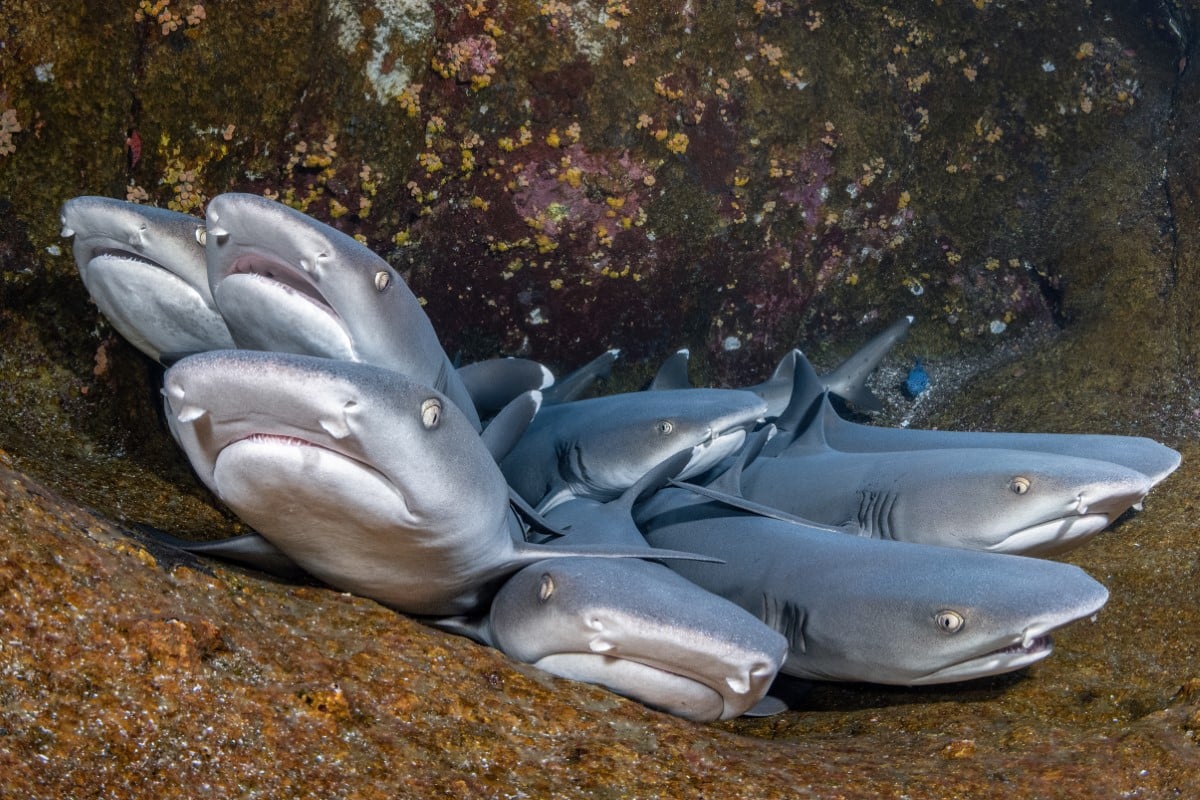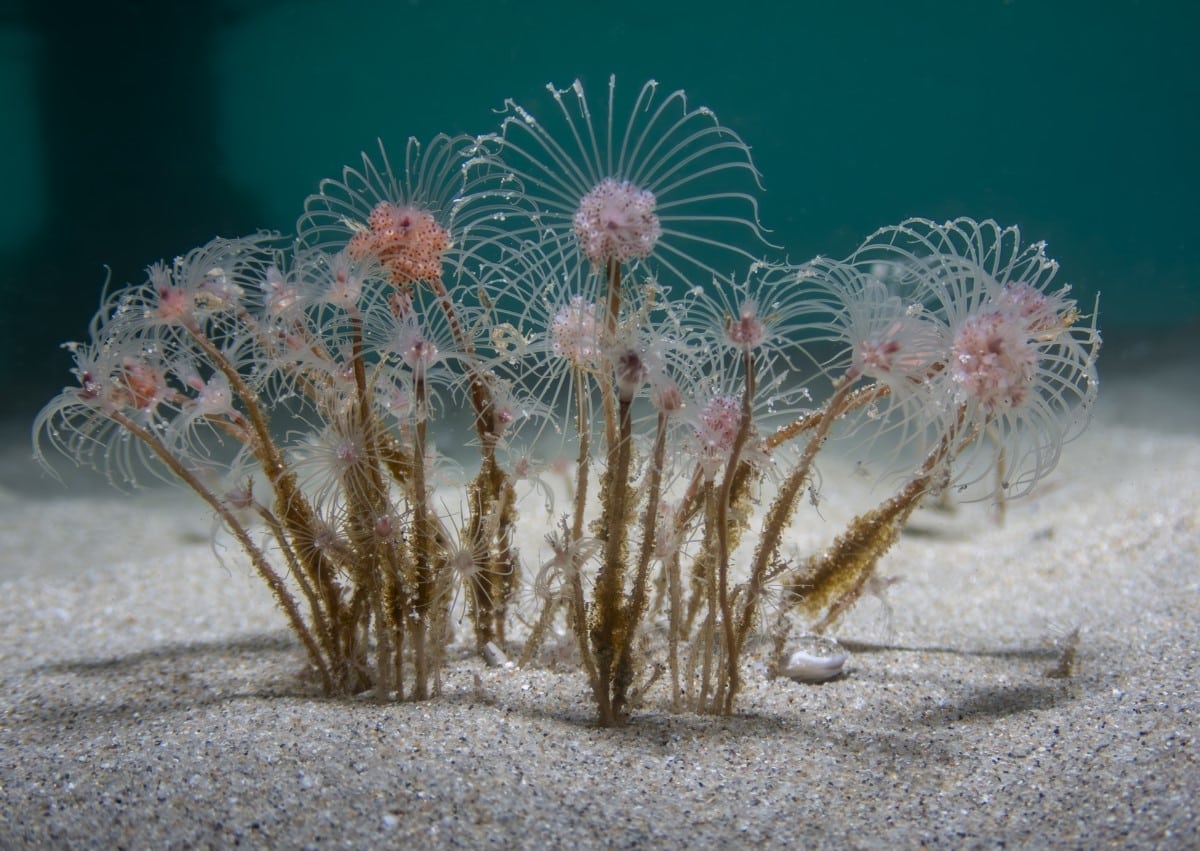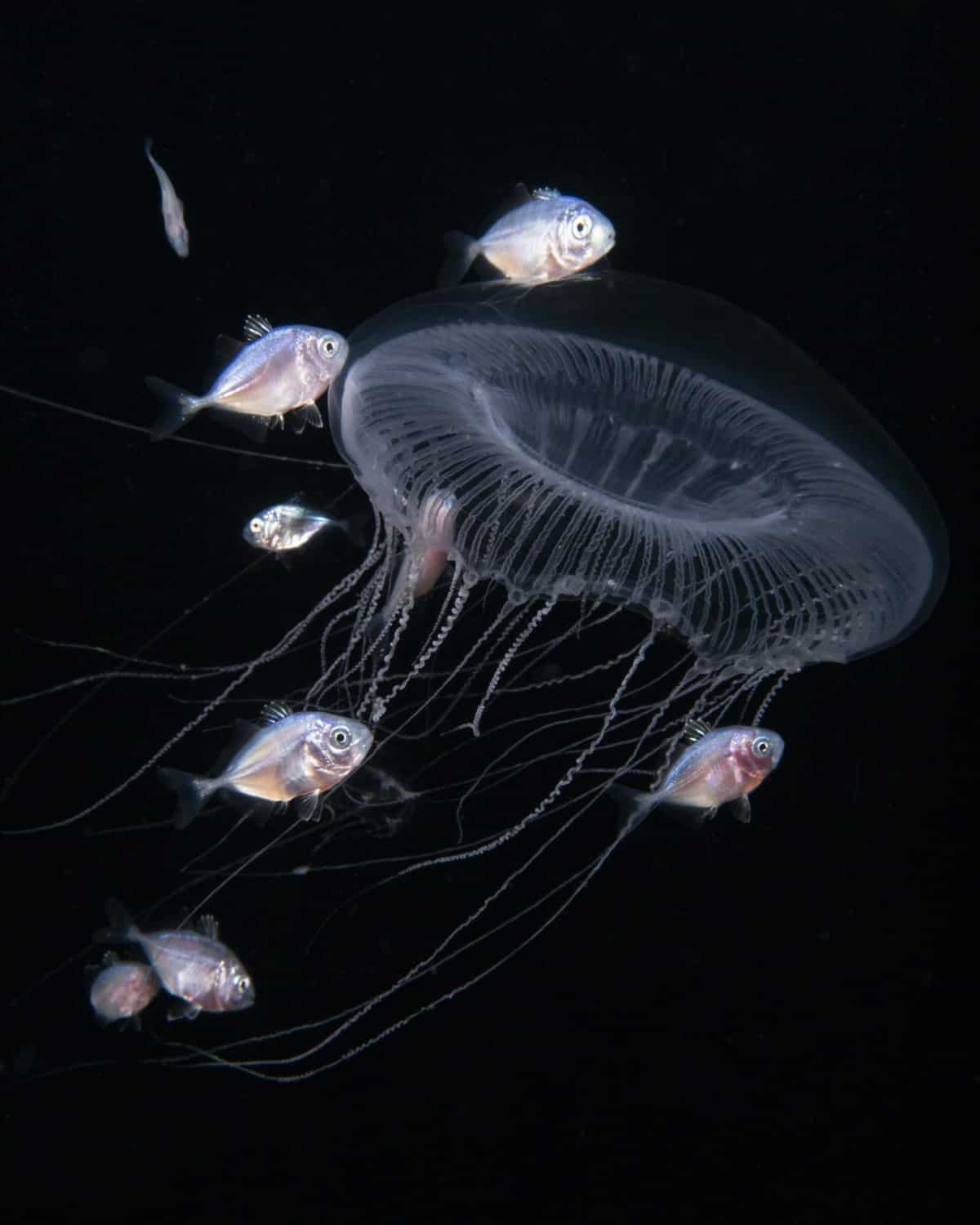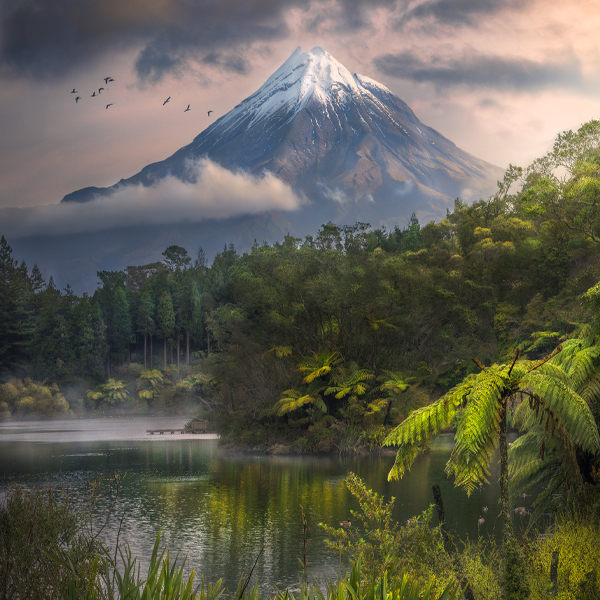
“Aquatic Primate” by Suliman Alatiqi. Best in Show and Winner, Portrait. Shot in Phi Phi Islands, Thailand.
“During fieldwork at Phi Phi Islands, Thailand, spanning several weeks, I focused my efforts on documenting the maritime behavior of the Crab-eating macaque with particular focus on their water forages. The macaques have adapted very well to living around the sea and will venture into the water for various reasons including transportation, scavenging, cooling down and playing. Highly efficient swimmers, they can dive for up to half a minute and can cover short distances faster than most humans. This photo offers a rare glimpse of the swimming movement of a male macaque.”
The world's largest underwater photo contest has revealed the results of its coveted competition and the winners are spectacular. Ocean Art Underwater Photo Competition, organized by the Underwater Photography Guide, gave out over $120,000 in prizes to photographers in 14 different categories, as well as the overall winner.
Photographer Suliman Alatiqi made a big splash in this year's competition. Not only did his photo of a crab-eating macaque win Best in Show, but the photographer also won two different categories. The macaque image topped the Portrait category and another photo of whitetip reef sharks in Mexico took home the win in the Wide-Angle category.
Thousands of images from photographers hailing from 90 countries entered the contest. The wide-ranging categories allow these photographers to show off their abilities, whether they are documenting conservation stories or creating a fashion shoot underwater. And by giving these underwater photographers a platform, the Ocean Art Contest is shining a spotlight on the diversity found within underwater photography.
Check out some of our favorite winners and finalists below and see the full gallery on the Underwater Photography Guide website.
Here are the winners of the 2023 Ocean Art Underwater Photo Competition.

“Sealion Playing in Sardine Ball” by Joergen Rasmussen. Winner, Black & White. Shot in Magdalena, Baja California, Mexico.
“Each November, sardines aggregate offshore the Mexican west coast. This in turn attracts many predators. Working with a local fisherman, we search the deep water offshore near the continental shelf and we spotted a lonely sealion. The sealion was chasing the sardines and the ball was constantly changing shape as the sealion broke it up.”

“Into the Flames” by Miguel Ramirez. 4th Place, Compact Macro. Shot in Reunion Island.
“During a night dive on Reunion Island, I saw a huge Spanish dancer. And when I looked closer, I noticed that there was an emperor shrimp hidden in its gills!
I was happy because it's the first time I've seen this association on a dive on Reunion Island (rarer to see it than in Indonesia!).
I tried to put my camera at gill level to get the black background. The shrimp was just above her head, giving the impression that she was in the middle of flames!”

“Bunk Buddies” by Suliman Alatiqi. Winner, Wide-Angle. Shot in Roca Partida, Mexico.
“Whitetip reef sharks are one of few shark species that rest in place. At Roca Partida, a small island, real estate is limited for the many whitetips that live there and they can often be seen bunking together. I wanted to get a photo of all of them facing me and with a lot of patience and a careful approach I managed to do so.”

“Lunch Time” by Alessandro Giannaccini. Winner, Coldwater. Shot in Porta Lake, Tuscany, Italy.
“In the photo, an Italian green frog is seen devouring an insect, specifically a scolopendra. This remarkable moment occurred during lunchtime at Porta Lake, a protected natural area—a muddy swamp teeming with aquatic plants, insects, and amphibians located in Tuscany, Italy. I couldn't believe my eyes as I witnessed this unique and swift scene unfold. The entire sequence lasted only a few seconds. In an instant, the frog skillfully captured and consumed the scolopendra, resulting in a sophisticated yet fortuitous photograph!”

“The Birthday” by Kenji Sato. Winner, Marine Life Behavior. Shot in Miura Peninsula, Japan.
“Black cardinal fish live in shallow coastal waters, and males raise eggs they receive from females in their mouth (mouth brooder). The eggs hatch in about a week. Until they hatch, males stay still behind a rock and feed the eggs with fresh seawater. At first, I did not know when the eggs would hatch, but after a few observations, I could tell when the eggs would hatch. Hatching occurs within a few hours after sunset. At the moment of hatching, the father swims upward and spits out the babies in an instant. So, it's difficult to take a picture.
It is said that the number of fries in a single hatching is about 20,000, so the moment of hatching is quite impressive. As soon as the babies hatched, they scattered all over the place. I hope that many of the fry will grow up and survive next year.”

“Underwater Fireworks” by Imogen Manins. Winner, Compact Macro. Shot in Mornington Peninsula, Australia.
“In the shallow waters of Naarm (Port Phillip Bay), sparse colonies of Tubular Hydroids poke their heads out of the sand in cold, shallow water. There are hundreds of individuals, but at just 4cm or so tall it's easy to dismiss these tiny animals which are endemic to the Great Southern Reef of Australia. Each individual here is either male or female and extend their outer tentacles to catch passing plankton.”

“Squid hunting” by Keigo Kawamura. Winner, Blackwater. Shot in Japan.
“I collect and photograph floating creatures at night, Bonfire style. Many squid and shrimp will gather in the underwater torch. The squid in the photo is known to be the smallest in the world, and the pygmy squid successfully preyed on a shrimp as large as its own body. Pygmy squid eat shrimp by inserting their mouths into the gaps between their shells.”

“Cavalluccio” by Alberto Casati. Winner, Macro. Shot in Puerto Galera, Mindoro, Philippines.
“During the dive, I saw this little subject and I decide to take the picture using a snoot with technical backlighting.”

“Stay-at-home Mom” by Derek Singer. Winner, Compact Behavior. Shot in Hoodsport, Wahsington, USA.
“While GPOs are a common sight here in the Pacific Northwest, seeing a female nesting is rare enough that when someone does find one, word of mouth spreads quickly. In this case, my dive group had heard a couple nests were found at Sund Rock, an excellent site for finding GPOs in general. Since their dens tend to be in crevices and cuts in the rocks, getting a well-lit and well-composed photo with a large full-frame camera can be difficult (and risky if you’re shooting with a dome). Although the female will spend months caring for her eggs, we can never predict when they'll hatch and she'll die. I was intent on making the most of my opportunity since it may have been my only one.
Therefore, I decided to bring my TG-6 instead of my normal SLR. With the smaller form factor and very short minimum focusing distance, I was confident I could get the camera and the strobes close enough to capture a striking image. It turned out to be a good call because this particular nest was tightly ensconced in a pile of rocks. I captured a series of close-ups of the mama octopus circulating water through her eggs before getting distracted by another GPO wandering out in the open. This specific image best portrayed the tightness of the quarters and balanced the mama and her eggs. From the RAW file, my edits were focused primarily on boosting the contrast to make the colors and textures pop.”
Underwater Photography Guide organizes the contest, which is the largest underwater photography competition in the world.
“Water Sprite” by Justin Lutsky. Winner, Underwater Art. Shot in Ginnie Springs, Florida, USA.
“‘Water Sprite' was captured in the crystal-clear waters of Florida’s natural springs. I’ve been traveling to Florida to shoot for years, as the springs' clarity and natural beauty create a breathtaking canvas for underwater portraits. For this image, I worked with professional mermaid and underwater performer, Abbey Blake.
Everything in this image was shot practically and captured in-camera. Abbey wore a mesh bodysuit to which we attached the fairy wings, and together we ventured out into the springs in early January.”

“After the Wedding” by Peter Pogany. Winner, Nudibranch. Shot in Anilao, Batangas, Philippines.
“In the past two years I dove in Anilao on three separate occasions. We encountered this species on our first tour and were delighted to find that they were mating. My two diving buddies busied themselves with the nudibranchs, and by the time it was my turn I had no air left. I hardly hoped to get a second chance to observe this special event. But on our third tour I cought them “in flagranti”.”

“Tea Party” by Lucie Drlikova. Winner, Underwater Fashion. Shot in Prague,Czech Republic.
“This photo is part of my project Once Upon a Dream in Waterland, which I have been working on since 2017. All the scenes are real, including the food and cakes, which were made from concrete and covered with special colored foam, photographed underwater. Costumes, props, and scenes are hand made by me.”

“Dangerous Shelter” by Chris Gug. 4th Place, Blackwater. Shot in Florida, USA.
“Larval-stage jacks sheltering in various species of jellyfish are somewhat common in blackwater diving off coastal Florida, and after shooting them countless times over the years, I nowadays hunt for both quality and quantity. The quality comes from a jellyfish that is perfectly round, with aesthetically perfect tentacles, with an unbroken bell, and the quantity comes from the number of jacks living within it – the more the better, and while one or two is the norm, nine is exceptional! Always striving to “do no harm”, I've learned that with these particular subjects, the jacks may be somewhat resistant to the jelly's sting, but definitely not immune. I therefor limit myself to 2 or 3 rapid shots, then I avert my lights and swim away, so as not to disorient the jacks, causing them to bump into the tentacles. Similarly, I've learned the best way to approach, is to immediately shut off all but the dimmest light upon locating such a subject, and approach with only the bare minimum light needed for the camera to focus by. To the best of our knowledge, this is commensalism symbiosis, wherein the jacks receive the benefit of a dangerous shelter while drifting through the open ocean as they mature, but the jellyfish is neither helped nor harmed.”

“Release of newborn blacktip shark during study on shark adaptation to climate change” by Victor Huertas. Winner, Underwater Conservation. Shot in Mo’orea, French Polynesia.
“Professor Jodie Rummer releases a newborn blacktip reef shark (Carcharhinus melanopterus) in Mo’orea, French Polynesia, after tagging it, and collecting biometric data. Professor Rummer leads Physioshark, a research team headquartered at James Cook University in Australia that investigates the impact of climate change on the physiological performance of newborn sharks in tropical shark nurseries. These habitats typically occur in shallow waters and are therefore highly exposed to rising temperatures and lower oxygen concentrations. Scientists are untangling the challenges newborn sharks face in such rapidly changing environmental conditions. Professor Rummer and her students have so far been able to show how despite the burden climate change is placing on the physiology of young sharks, these are displaying an exceptional resilience to these changes, giving scientists hope that they will be able to adjust to a warming ocean.”

“Dress for the Sea” by Serge Melesan. 3rd Place, Black & White. Shot in Mayotte Indian Ocean.
“Tursiops dolphins living just below the surface in the Mayotte lagoon. This photo shows them as a family and as social animals with a hierarchy. The best place to see them is in the Ocean. It's a magical encounter when they accept you in their environment.”

“Circle of Life” by Andrea Michelutti. Honorable Mention, Compact Behavior. Shot in Anilao, Batangas, Philippines.
“I found this Favorinus tsuruganus, along with its eggs, on the egg ribbon of the Spanish dancer (Hexabranchus sanguineus). This image captures a stark contrast between nature’s beauty and its harsh realities. The bright colors and intricate designs of the nudibranchs are captivating, but they hide a harsh reality. The nudibranch in the foreground is feeding of the eggs of another of its kind: the ribbon of purple eggs laid by the Spanish dancer fell prey to the Favorinus tsuruganus, which also deposited its white eggs on top.
This scene illustrates intraspecific predation, a phenomenon where an animal consumes another of its own species, typically targeting the eggs or the young. Shooting this image required a great deal of patience, as the constant movement of the purple eggs, caused by the undertow, obscured the nudibranch and its eggs. After some attempts, I succeeded in capturing this vivid portrayal of the ‘circle of life”.”

“Eye See You” by Keith Mash. Honorable Mention, Macro. Shot in Sulawesi, Indonesia.
“I spotted a large green turtle nestled in the wall. It seemed to be observing us from afar and showed no signs of swimming off. With slow movements I managed to get within macro range and cautiously maneuvered my camera into position waiting for the right moment. To my surprise the turtle turned its head and gazed directly into the camera as if to check me out. As its eye came into focus, I paused; me looking at the turtle, the turtle looking at me…click… it was done.”

“The Beauty of the Swamp” by Bryat Turffs. Winner, Compact Wide Angle. Shot in Everglades National Park, Florida, USA.
“Exploring new environments, especially seldom visited ones, is one of the greatest pleasures of underwater photography for me. The Everglades is a rightfully foreboding environment, but also one of great beauty and interest. To capture this image, I was careful about avoiding risks, like alligators, in the area that I was snorkeling. Shooting with my GoPro made getting the camera close to my subjects easy. In this frame, I sought to capture a beautiful, native, Florida Gar against the backdrop of a cypress dome with light rays filtering through the trees. As a fish nerd, observing the many beautiful species that call this environment home is another joy. This image also features native largemouth bass in the background. Although not featured here, many of my frames from this day of shooting also captured invasive fishes, illustrating just one of the many impacts human actions have had on this imperiled ecosystem.”






















































































